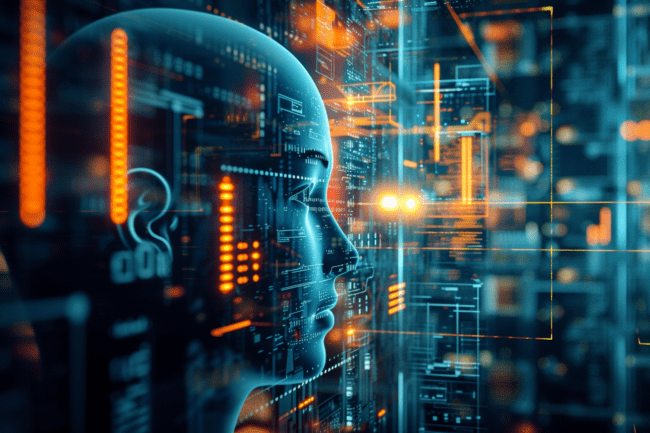Deep learning has become a pivotal area in the realm of artificial intelligence, setting benchmarks in performance across numerous tasks. This surge stems from the ability of deep learning algorithms to automatically learn from vast amounts of data. The allure of deep learning is its promise to handle complicated problems that were once deemed insurmountable.
What are Deep Learning Algorithms?
At its core, deep learning is a subset of machine learning that utilizes artificial neural networks. These networks are inspired by the human brain’s architecture, enabling computers to learn from data in structured layers. Each layer processes the input data, extracts features, and passes the information to the next layer. This hierarchical feature learning is distinct from traditional machine learning where feature extraction often requires manual input.
The Building Blocks: Neural Networks
Neural networks, the foundational components of deep learning, consist of:
- Input Layer: This is where the data enters the network. Each neuron represents a feature of the input.
- Hidden Layers: These layers perform computations and transform input into something the model can process. More hidden layers allow the network to capture complex relationships.
- Output Layer: The final layer delivers the network’s prediction or classification. It transforms the processed information into a usable output.
One hallmark of deep learning is the depth of these layers. While traditional networks may have a few, deep learning architectures can span dozens, even hundreds, of layers. This depth gives rise to the term “deep” learning.
Types of Deep Learning Algorithms
Deep learning algorithms can be classified into several categories based on their architecture and the type of data they process:
1. Convolutional Neural Networks (CNNs)
CNNs excel in processing grid-like data, such as images. They utilize convolutional layers to automatically detect features like edges, textures, and shapes. This capability has made CNNs the go-to for image recognition tasks. With pooling layers subsampling the data, CNNs become both efficient and effective.
2. Recurrent Neural Networks (RNNs)
RNNs are designed for sequential data, making them ideal for tasks such as language modeling and time series prediction. They maintain memory across sequences, allowing them to capture context from previous inputs. However, vanilla RNNs can struggle with long-term dependencies, which led to the development of specialized architectures, like Long Short-Term Memory (LSTM) networks.
3. Generative Adversarial Networks (GANs)
GANs have gained attention for their ability to generate realistic data. They consist of two competing networks: a generator that creates fake data and a discriminator that evaluates it. Through this adversarial process, GANs can produce images, music, or even text that closely resembles real examples.
4. Transformers
Transformers, introduced in the paper “Attention is All You Need,” revolutionized natural language processing. They remove the sequential constraints of RNNs by using self-attention mechanisms. This enables them to leverage global context and process data in parallel, making them faster and more effective for tasks such as translation and summarization.
How Deep Learning Works
Deep learning relies on massive datasets to enhance model accuracy. Here’s how the process typically unfolds:
- Data Collection: Gathering large datasets necessary for training.
- Data Preprocessing: This involves cleaning, normalizing, and transforming the data into a suitable format for the model.
- Model Architecture Selection: Choosing the right deep learning architecture based on the problem at hand.
- Training: This phase involves feeding the preprocessed data into the model. The model learns to minimize the difference between its predictions and actual outcomes through techniques like gradient descent.
- Evaluation: Once trained, the model is evaluated using a separate dataset to assess how well it generalizes to unseen data.
- Tuning: Adjusting hyperparameters or altering the model architecture to improve performance.
- Deployment: Finally, the trained model is deployed for real-world applications.
Applications of Deep Learning
The flexibility and power of deep learning have led to its adoption across various fields:
- Healthcare: From diagnosing diseases through medical imaging to predicting patient outcomes.
- Finance: Fraud detection, algorithmic trading, and credit scoring.
- Automotive: Autonomous vehicles utilize deep learning for perception tasks.
- Natural Language Processing: Chatbots, sentiment analysis, and translation services.
- Entertainment: Content recommendation systems for streaming services.
The Future of Deep Learning
As deep learning evolves, several trends are emerging:
- Explainability: With increasing deployment in critical applications, understanding how models make decisions is paramount.
- Transfer Learning: The practice of taking a pre-trained model and fine-tuning it for specific tasks is gaining traction.
- Edge Computing: Running deep learning models on devices rather than relying solely on cloud infrastructure is becoming more popular.
- Ethics: Addressing bias in AI and ensuring fair representation in datasets are crucial considerations moving forward.
Final Thoughts
Deep learning algorithms have reshaped our approach toward machine learning, unlocking new possibilities and solving complex problems. While challenges remain—like resource intensity and the need for large datasets—the potential of deep learning will only continue to grow. By understanding and harnessing its capabilities, we can push the boundaries of innovation and technological advancement.

